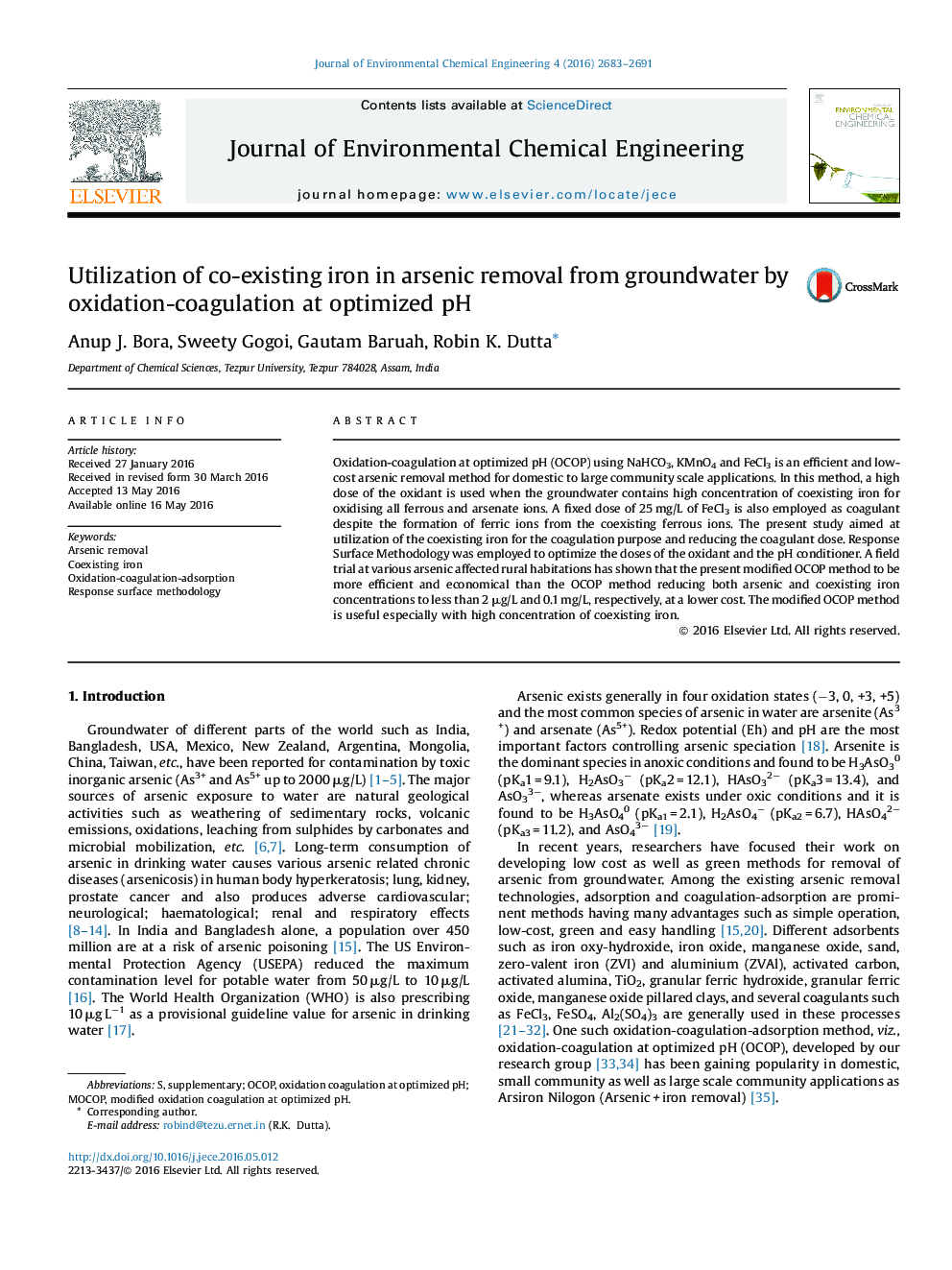| کد مقاله | کد نشریه | سال انتشار | مقاله انگلیسی | نسخه تمام متن |
|---|---|---|---|---|
| 221532 | 464260 | 2016 | 9 صفحه PDF | دانلود رایگان |
• Co-existing iron used in arsenic removal by oxidation-coagulation at optimized pH.
• Doses of oxidant and pH-conditioner optimized by response surface methodology.
• Field trial of the method has been carried out in arsenic affected areas.
• Arsenic is removed to below 2 μg/L undetectable by AAS from 100 μg/L.
• The cost is reduced by about 20% compared to that of the OCOP method.
Oxidation-coagulation at optimized pH (OCOP) using NaHCO3, KMnO4 and FeCl3 is an efficient and low-cost arsenic removal method for domestic to large community scale applications. In this method, a high dose of the oxidant is used when the groundwater contains high concentration of coexisting iron for oxidising all ferrous and arsenate ions. A fixed dose of 25 mg/L of FeCl3 is also employed as coagulant despite the formation of ferric ions from the coexisting ferrous ions. The present study aimed at utilization of the coexisting iron for the coagulation purpose and reducing the coagulant dose. Response Surface Methodology was employed to optimize the doses of the oxidant and the pH conditioner. A field trial at various arsenic affected rural habitations has shown that the present modified OCOP method to be more efficient and economical than the OCOP method reducing both arsenic and coexisting iron concentrations to less than 2 μg/L and 0.1 mg/L, respectively, at a lower cost. The modified OCOP method is useful especially with high concentration of coexisting iron.
Figure optionsDownload as PowerPoint slide
Journal: Journal of Environmental Chemical Engineering - Volume 4, Issue 3, September 2016, Pages 2683–2691
